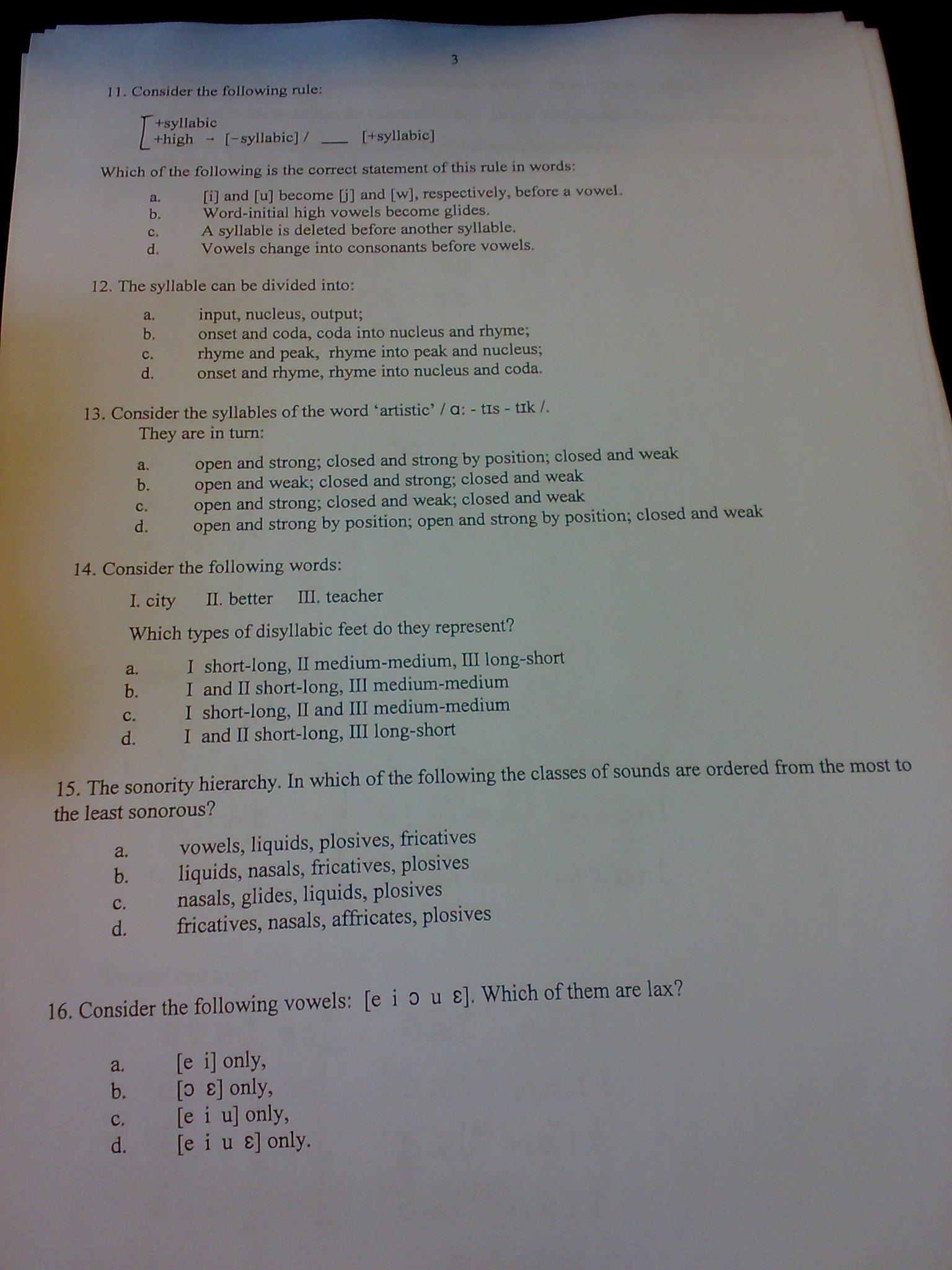20080627348

3
11. Consider tlić following rulc: f+syllabic
|_+high i [-syllabic] / _ [+syllabic]
Which of the following is the correct statement of this rule in words:
a. [i] and [u] become [j] and [w], rcspectively, before a vowel,
b. Word-initial high vowels become glides.
c. A syllable is deleted before another syllable.
d. VoweIs change into consonants before vowels.
12. The syllable can be divided into:
a. input, nucleus, output;
b. onset and coda, coda into nucleus and rbyme;
c. rhyme and peak, rhyme into peak and nucleus;
d. onset and rhyme, rhyme into nucleus and coda.
13. Consider the syllables of the word ‘artistic’ / a: - tis - tik /.
They are in tum:
a. open and strong; closed and strong by position; closed and weak
b. open and weak; closed and strong; closed and weak
c. open and strong; closed and weak; closed and weak
d. open and strong by position; open and strong by position; closed and weak
14. Consider the following words:
I. city II. better ID. teacher
Which types of disyllabic feet do they represent?
a. I short-Iong, II medium-medium, IH long-short
b. I and II short-long, III medium-medium
c. I short-long, II and III medium-medium
d. I and II short-long, III long-short
15. The sonority hierarchy. In which of the following the classes of sounds are ordered from the most to the least sonorous?
a. vowels, liquids, plosives, fricatives
b. liguids, nasals, fricatives, plosives
c. nasals, glides, liquids, plosives
d. fricatives, nasals, affiricates, plosives
16. Consider the following vowels: [e i o u s]. Which of them are lax?
a. [e i] only,
b. [o e] only,
c. [e i u] only,
d. [e i u e] only.
Wyszukiwarka
Podobne podstrony:
Microeconomics exam 11. Which of the following is a macroeconomics question A:How much would math ma
Obraz0001 (3) ENGLISH UTERATURE SEMSTER TEST I I: Choose the right answer. 1. Whic
finalB 01 -XClinical Immunology- Finał 1. Which of the fołlowing factors has no im
finalB 02 5. In which of the following types of glomerulonephritis is the level of
finalB 08 36. Which of the following is not expressed on the surface of the maturę
Which of the following factors has the LEAST impact on casing seat selection? A. R
Which of the following is NOT a primary function of drilling fluids? A. Cuttings r
In comparing the API specs for L-80 and N-80 tubulars, which of the following statements is TRUE? A.
19. Which of the following is NOT an API classification for oil well pumps? A. Tub
11 1024x768 sta;e(e. w. e. e.) fsławo. ó. o. W) T t Figurę 14.2 Portionofthe siatę space graph of th
więcej podobnych podstron